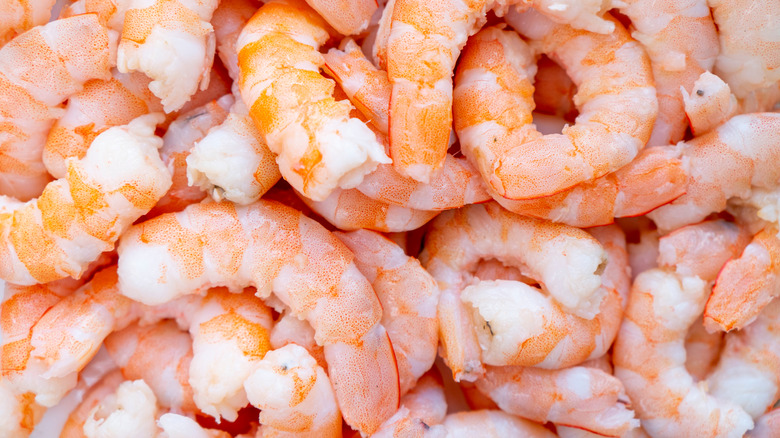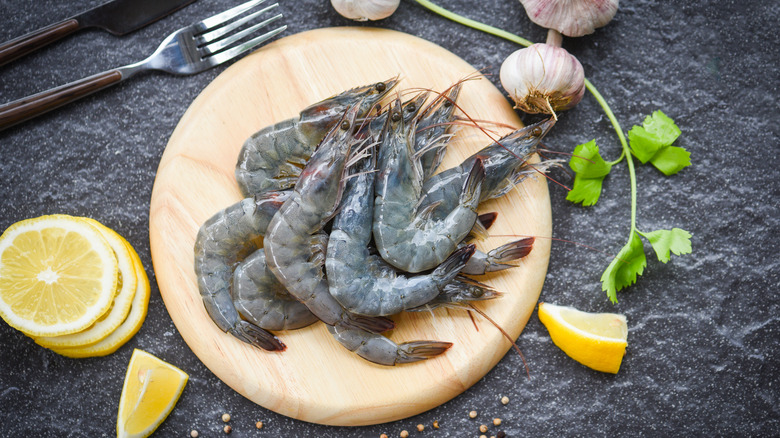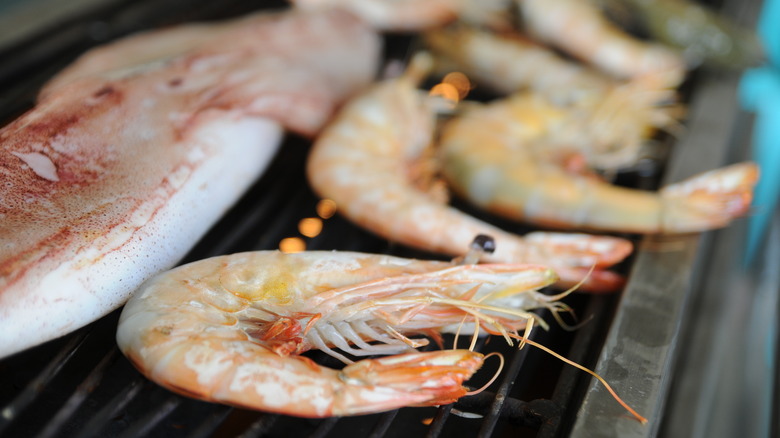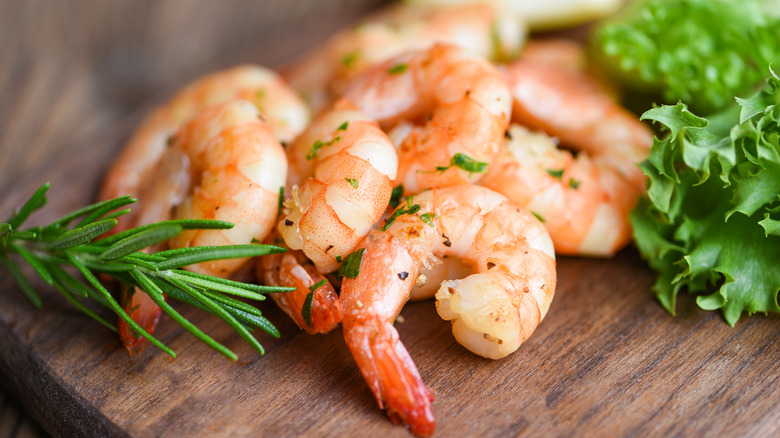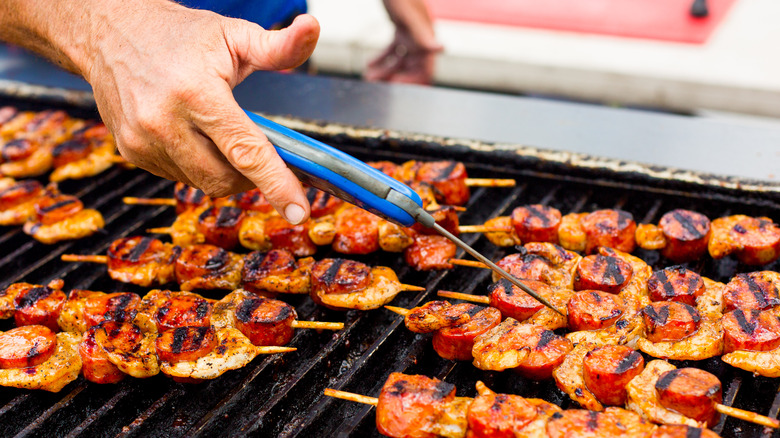Here's How You Can Tell If Shrimp Is Undercooked
Cooking animal protein is already intimidating when you consider how sick it can make you if you get it wrong. But seafood, in particular, may seem tough to get right. While no one wants overcooked shrimp, getting sick with food poisoning would be even worse. But if you know what to look for and how to tell if your shrimp are actually done, then you should have no fear when serving up delicious dishes that feature this item.
Shrimp can be cooked in so many different ways. From shrimp scampi to shrimp cocktail and shrimp-laden pasta to grilled skewers of shrimp, it is an incredibly versatile food. Instead of shying away from preparing some amazing meals around shrimp, it is high time you learned the ways to tell if shrimp is undercooked no matter the cooking method. Even if they are slathered in barbecue sauce or baking off in an oven without great light for viewing them, these methods of determining how cooked shrimp are won't fail you.
Look at the color of the shrimp
One of the easiest and most common ways to tell if your shrimp is undercooked is to look at the color of it, according to Substitute Cooking. But you might need to really get a good look at raw shrimp first to notice the big change its appearance undergoes as it cooks. When shrimp is raw, it tends to look quite gray in color and even a bit translucent. However, after shrimp has been cooked, it should do a 180-degree turn and be white with pops of pink or red. You also shouldn't be able to see into the shrimp anymore.
If your shrimp still have a tinge of gray or translucency to them, chances are they are not done cooking. Wait until the shrimp have a nice even color and no translucency before taking them up. And don't forget to check all sides of the shrimp.
Evaluate the shape of the shrimp
There is another characteristic of cooked shrimp that you can eyeball. Just like looking at the color of the shrimp, you can take note of the shape of the shrimp, according to Substitute Cooking. But you will, again, need to really get a good mental image of raw shrimp to compare to the state of being cooked your shrimp are in when you check them. Gray, raw shrimp tend to be quite flexible without their shells. They also appear to be longer because the shrimp lie straighter than when they are fully cooked.
Shrimp that are undercooked will likely still be somewhat straight or have a very slight curve. As Substitute Cooking explains, those that are so tightly wound that they look like the letter "O" are overcooked. The sweet spot is getting a good curl on the shrimp to form something similar to the letter "C." That's because the muscle in shrimp shrinks as it cooks, according to Yummly. So, the more cooked your shrimp are, the tighter the curl will be. Therefore, shrimp that are only slightly curled and look somewhat like the letter "U" are most likely undercooked and need a bit more time.
Feel the texture of the shrimp
After evaluating the color and shape of cooked shrimp, you can resort to one more sensory method: Feel. Just like the color and shape of raw shrimp compared against cooked shrimp, the texture will change. According to Leaf, undercooked shrimp will be fleshy even though they will not be as pliable as when they were raw. On the opposite end of the spectrum, overcooked shrimp are notoriously tough and just as difficult to chew as raw shrimp. Perfectly cooked shrimp should fall somewhere in between the two.
To tell whether your shrimp are undercooked by touching them, use your finger or a fork and gently press down on the shrimp. If they feel spongy and spring back quite a bit after pressing down, they likely need to continue cooking for a while. Undercooked shrimp will need to continue cooking until they are firm but still have a slight give.
Take the temperature
Finally, according to Substitute Cooking, another great indicator of the level to which shrimp have been cooked is their temperature. This is a perfect method for those who are nervous about trusting their own senses and would rather rely on a more scientific approach. Even then, it is important to keep in mind that thermometers can read slightly off, so it doesn't hurt to back any method up with another means of evaluating shrimp.
Substitute Cooking explains that shrimp will cook through and be completely done when the heat source reaches a temperature of 165 degrees Fahrenheit. But you likely know that the temperature your grill or oven displays is not always the most accurate either.
That's why you should also check the internal temperature of the shrimp themselves, which should be 120 degrees Fahrenheit to be safe for consumption (via Boat Basin Cafe). So, anything less than that is undercooked.
